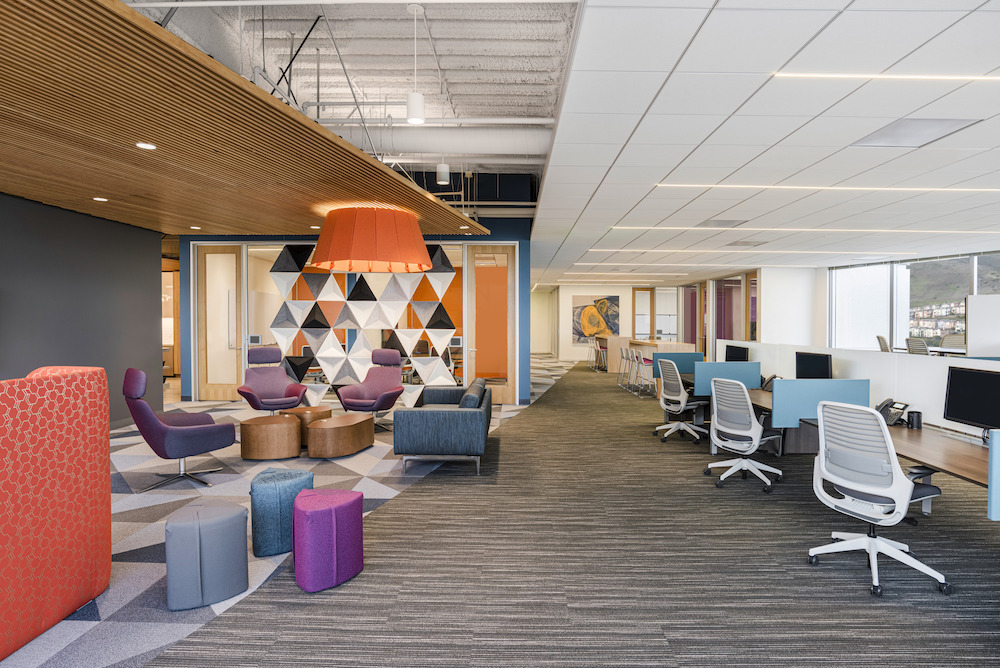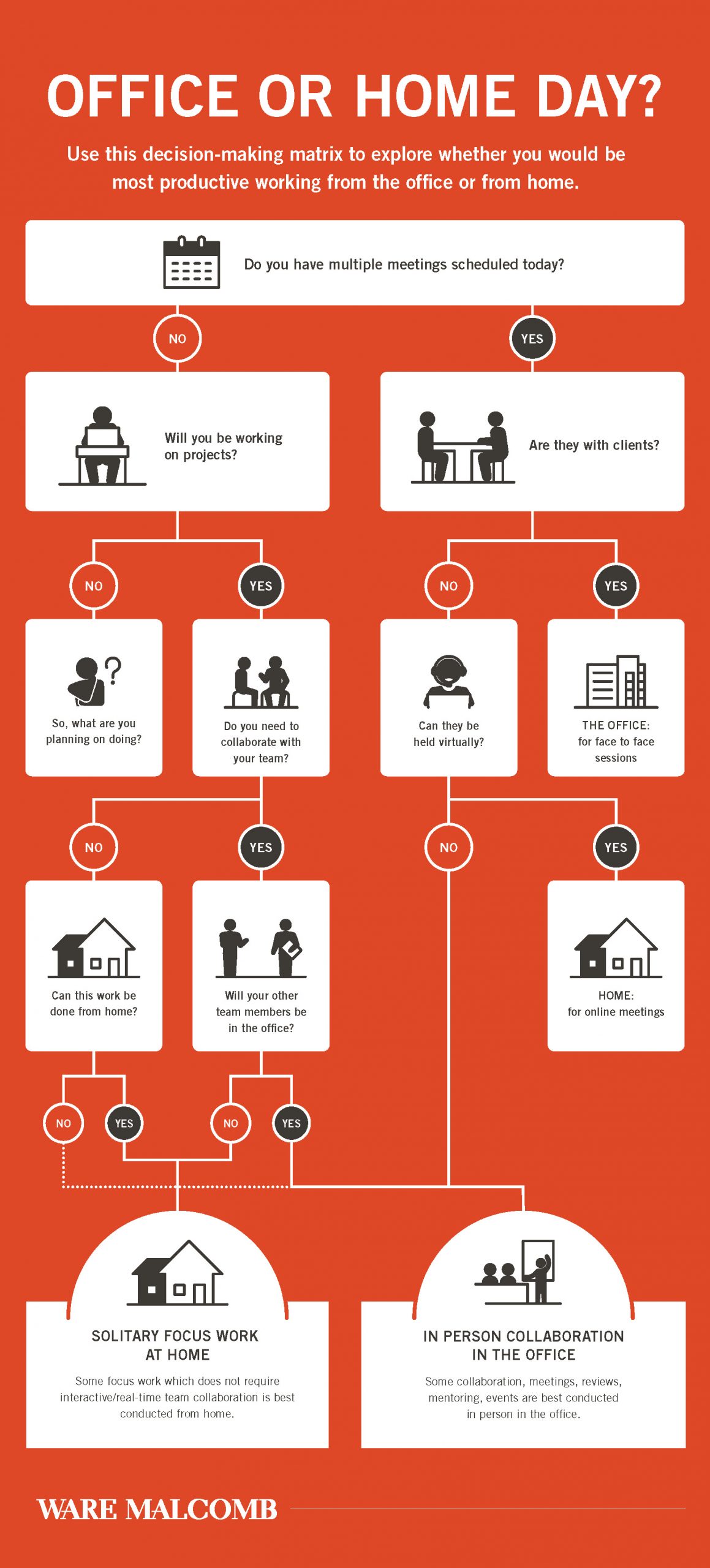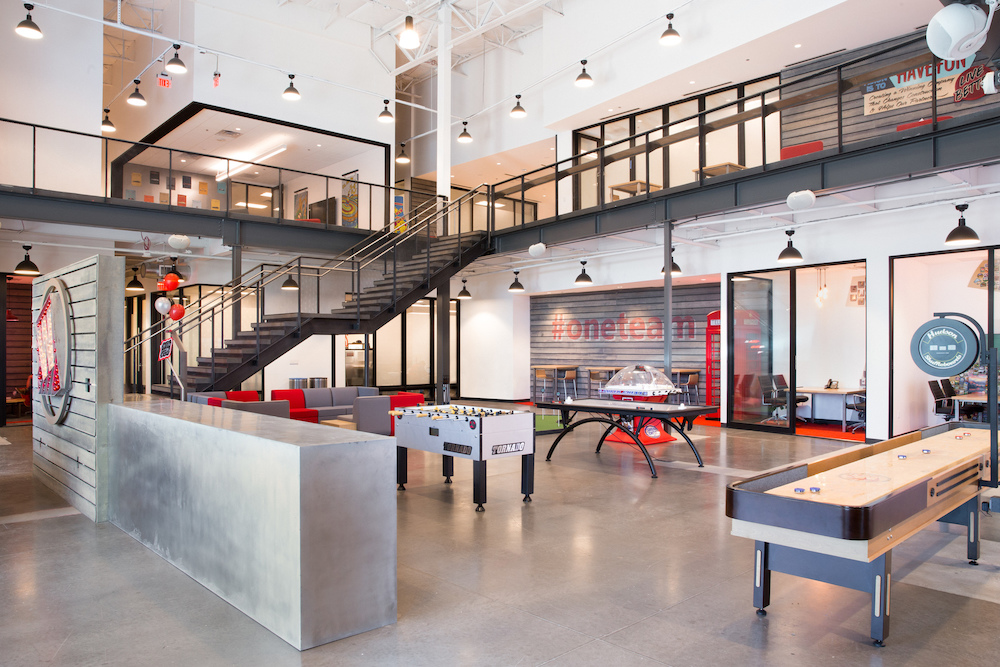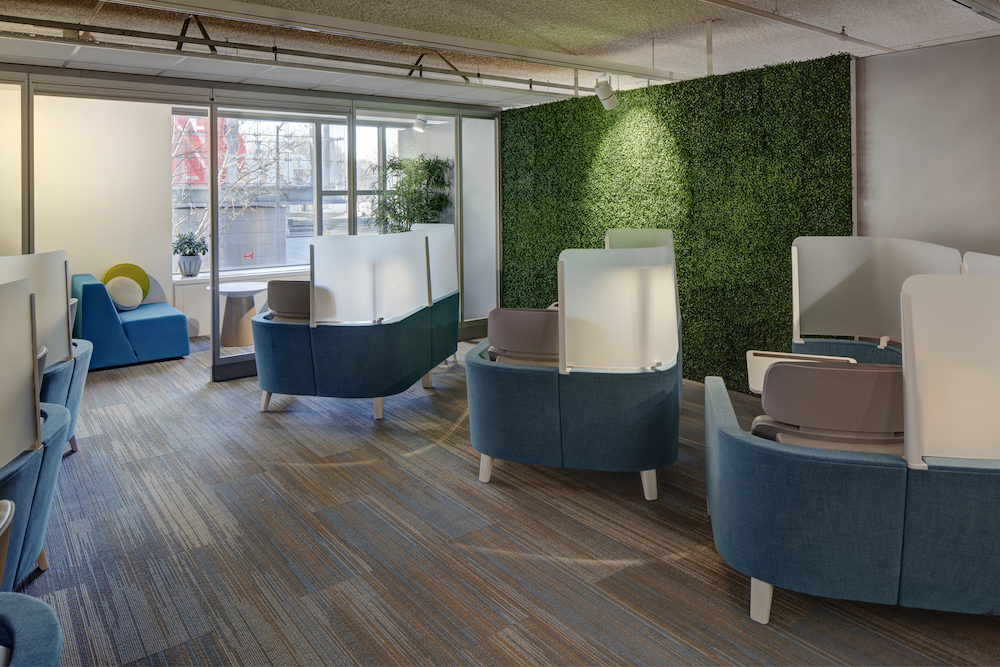There is one certainty in all this COVID-19 ambiguity: the date of your lease expiration.

Work was historically a place you went, but now is synonymous with what you do. Working from home has been the reality for 100 million Americans (Gallup, 2020) during the COVID-19 crisis. Whether part of the contingent soon returning to the office in phases, not returning until next year, or potentially never returning, the pandemic has accelerated the conversation about remote work, lease expiration, and the demand for office space.
Maximize the Opportunity
Commercial office lease terms are typically 3-5 years. Organizations begin planning at least a year before the lease expiration to formulate requirements, search locations, explore options, negotiate, design and build the office space before move in. The typical real estate decision process centers around 5 main factors:
- Location
- Quality of building
- Amount of space required
- Lease term
- Tenant improvement allowance
COVID-19 has up-ended the “amount of space” question, requiring a re-examination of what will be needed for the future office. A recent real estate survey (McGregor, 2020) indicated that 44 percent of respondents would lease new office space for their organization. But how to decide on the right office space for your organization?
The pandemic and the massive work from home experiment have presented a unique opportunity for transformation and re-invention of the workplace eco-system. Alternate workplace strategies such as a remote workforce, decentralization of locations, un-conventional seating/scheduling schemes that just six months ago would have been unheard of, are now under consideration.
It is tempting to take the path of least resistance and simply renew at your current office location, give back some square footage and show an incremental bottom-line real estate savings. But this myopic emphasis on cost is a false economy missing a bigger play: to re-consider the employee experience, embrace new ways of working and in the process reduce the office footprint. This article will explore and synthesize the relationships between people, place, and the spaces they work, to inform what to do after lease expirations.

Interplay Between Culture & the Office
Culture represents the characteristics and personality of an organization. It embodies the values, traditions, policies and attitudes of a company. “Workplaces are a proxy for culture,” (Fox, 2020) and offices are a primary cultural artifact, (Schein, 2017). But a change in the office, need not alter deep cultural beliefs, (Howard-Grenville, 2020). Culture is as much a mindset as a place. Entrepreneurial cultures transformed from the garage to the office, developing and evolving with the organization. Cultures centered on agility, equity, transparency, collaboration and choice support employees whether working from home or the office.
Build a balanced culture integrating in-person and virtual work. “Use disruption to bolster the cultural core,” exploiting the “contents of the cultural tool kit,” (Swindler, 1986). Explore how employees get work done and how they think about work in the organization. Learn from the working at home experiment to assess how the company’s culture is being tested and transformed.

A Businesses’ Most Valuable Asset
Shift the conversation from about the space to about the people. The 3-30-300 rule which states that people cost 10 times more than space is more appropriate than ever in the context of COVID-19 office space decisions. “An office with lower rental rates might save you a few dollars per square foot. But what if that cheaper office on paper is really more expensive because of its negative impact on employee engagement and wellbeing?” (Jones Lang LaSalle, 2016).
Research reveals that people prefer working from home, not only in pandemic times. A recent IFMA survey indicated that 76 percent of the global participants wanted to continue to work from home two days per week on average and 16 percent do not want to return at all. For the 3 or so days per week that most people will eventually be in the office, they are seeking diverse experiences, such as collaborating, innovating, and staying informed. Institutional knowledge, career development and relationship building are more reasons to be in the physical workplace, (CBRE, 2020).
So, who should work from home and what are the implications? How much work from home makes sense for the individual, their role, the team, and the organization? Capturing data from the remote workforce will guide the conversation. Questions to build a Work from Home profile are often categorized around these areas:
Wellbeing – Does the employee have a suitable, ergonomic home workspace? What other stressors or life circumstances are impacting an employees’ work capabilities?
Safety – How does the employee commute to the office? What PPE (personal protective equipment) will be integrated into the office experience? What is the employee’s readiness perception for continued work from home or return to the office?
Productivity – Does the employee have access to tools, technology and connectivity from their home? Is their role’s tasks and processes well-defined? Does their role require highly interdependent work for success? (Gallup, 2020). Is the work getting done during the initial work from home orders? What is the importance, suitability and time spent for each major work activity?
While it is not feasible for leaders to make a personal assessment of each employee’s preferences, organizations should empower managers to “reasonably honor the needs of their employees,” (Gallup, 2020).
Recent studies of employees working from home (MacKay, 2020) indicate that more experienced employees report feeling more accomplished at the end of their day. Less tenured employees report being less productive, requiring more direction, are less aware of what is expected of them and often have less dedicated space at home to work. They thrive with mentoring and team support provided by the office.
More employment opportunities are available for employees given the choice to work remotely. Demographic restrictions for hiring are lifted. More alternative employment opportunities for part time or temporary workers are available. Greater gender equity is attainable for women who can work remotely, allowing them to accept new roles, relocations and promotions. An employers’ internal and external candidate pool is enhanced by maintaining the choice and flexibility of remote work.

Location, Location, Location…Place
The criteria for a company’s location are undergoing a make-over, starting with the purpose of the office, size, transportation connections and amenities. Urban center offices can be re-imagined into gathering spaces where employees schedule team and collaboration times 1-2 days per week. The hub-and-spoke model moves offices closer to where the workforce lives and reduces the expensive city center space to customer engagement spaces. The flexibility of co-working lease terms may satisfy other organization’s needs for speed of space delivery. These less centralized offices align with widely distributed teams.
We need an office…we’re exploring where it should be.
Historically, the reasons companies changed their office location centered around a few themes: organizational/culture/business process change; expansion-contraction; employee or customer experience; attracting and retaining top talent; economic incentives in new city/state. Implicit in all these themes was cost reduction and/or avoidance.
Environmental impacts on the office location are being assessed and measured. Can business travel be reduced or eliminated? What is the average commute time for the workforce, and by what means? Can the circular economy play a role in reducing the organization’s carbon footprint?
Home is now a full-fledged member in the eco-system of work locations, joining the office and other third places, like co-working spaces and cafes. There is increasing attention on the home office design. All the attention paid to physical attributes in the office, such as ergonomics, lighting and technology are moving home. The furniture industry is re-tooling products and services to support this new demand.

Competitive Advantage…Space
The physical office, pre-COVID, reflected an organization’s brand and culture; provided employee experiences for connectivity and innovation; and served as an attraction and retention magnet for the best talent. The post-COVID office must prove its reason for being, specific to each organization’s requirements.
There are few scenarios where companies plan to bring their entire workforce back to the office space. CoreNet Global reports that 69 percent of respondents in their most recent survey plan to reduce their office footprint, (Harrison, 2020). What physical attributes will characterize the future office space once the immediate pandemic concerns have been dissipated?
Office space planning considerations in the post-COVID landscape include decreased densities, increased circulation and compartmentalization of space – that is easily expanded or divisible in the future. The building’s commitment to preparedness will incorporate every aspect of the employee’s journey from their parking spot to their desk.
- Gesture based entry and elevators with smartphone access will replace badges with near field communications.
- Touchless restrooms with toilet contamination dispersion will be demanded.
- Increased daytime cleaning of tenant and shared space will be visible and documented.
- Increased interior air quality standards, smart lighting, and occupancy sensors that were previously considered more difficult (read costly) to retrofit into older buildings will now be included in capital project planning.
The significant landlord investment in shared amenities can be a positive factor for tenants who may be decreasing their leased space but still requiring larger collaboration spaces or individual focus zones. Other building attributes such as outdoor spaces for work and leisure, health and wellness programming and pop-up amenities to meet situational demand will play into tenant’s space decisioning.
Workplace is wherever the work takes place.
– Hood, 2019

Premortems and Pilots
There are still so many unknowns as we enter what has been called the bottom of the first inning in the COVID-19 series. Performing a project premortem uses prospective hindsight to identify risks at the outset, (Klein, 2007). The project team makes assumptions about what could go wrong, with plausible reasons for project failure. It prevents over-investing in a single idea.
Piloting one or two options/concepts is another strategy to test out planning concepts, protocols and capacity assumptions. Assessing scenarios in real time with business unit stakeholders provides solid feedback and actionable data to build road-tested solutions.
Recommendations and decisioning based on premortems and pilots appear to take longer at the outset, but make up that time in the long run, with a higher likelihood of success and adoption of the vetted solutions.
Start Now
In the case of a lease expiration in the next year, take advantage of this opportunity to explore new alternatives. Even if your organization does not have the data yet, consider that Fortune 500 CEOs estimate 25 percent of their workforce will not be returning to the office, (Murray, 2020). Use that benchmark to re-assess your employee roles and workplace standards. Re-examine the office location. Re-define your office and home workspaces. And re-consider testing scenarios with a premortem or pilot project. A hybrid office/home work model will foster a more resilient workforce and organization.

Benjamin Franklin on Death and Taxes
On November 13, 1789, Benjamin Franklin wrote a phrase that has reverberated ever since: “Our new Constitution is now established and has an appearance that promises permanency; but in this world nothing can be said to be certain, except death and taxes.”…and lease expirations.
References
CBRE. (2020). The Future of Work: Perspectives on the Way Forward.
Franklin, B. (1789). Benjamin Franklin’s last great quote and the Constitution. National Constitution Center.
Fox, R. (2020). Powerful Workplace Changes You Need to Know in 2020. Work Design Magazine.
Gallup. (2020). COVID-19: A Leader’s Guide to Developing A Work-From-Home Strategy.
Harrison, D. (2020, April 14). Corporate Real Estate Professionals: Employees will return in waves, not all once; Social distancing and other measures will continue at the office. CoreNet Global.
Hood, C. (2019, June). Will facility managers still exist in 2030? FM Link.
Howard-Grenville, J. (2020, June 24). How to Sustain Your Organization’s Culture When Everyone is Remote. MIT Sloan Management Review.
Jones Lang LaSalle. (2016, September 25). A surprising way to cut real estate costs.
Klein, G. (2007, September). Performing a Project Premortem. Harvard Business Review.
MacKay, J. (2020, April 1). Work from home productivity data: Why you (and your manager) shouldn’t be afraid of remote work. Rescue Time: blog.
McGregor, P. (2020, May 26). Survey: 6 in 10 Americans Don’t Want to Work from Home All the Time. Commercial Café Blog.
Morgan, J. (2017). The Employee Experience Advantage: How to win the war for talent by giving employees the workspaces they want, the tools they need, and a culture they can celebrate. Hoboken, NJ: Wiley.
Murray, A. (2020, May 14). Fortune 500 CEO survey: How are America’s biggest companies dealing with the coronavirus pandemic? Fortune.
Schein, E. (2017). Organizational Culture & Leadership, 5th ed. Hoboken, NJ: Wiley.
Swidler, A. (1986). “Culture in Action: Symbols and Strategies.” American Sociological Review 51:273-86.


There may be opportunities for tenants and landlords to negotiate early lease terminations, assuming the space is attractive to other replacement tenants.
It’s interesting that you mentioned that more space can create a competitive advantage for offices. I’d like to look for a professional office space for lease someday because I’ve always wanted to build my own career on my own terms. Finding the right time to quit my job is the only thing I have to figure out before I can start my own business.